Salvador Dali's Cookbook with non-child illustrations
Categories: Food and Drinks | History | World
By Pictolic https://pictolic.com/article/salvador-dalis-cookbook-with-non-child-illustrations.htmlWhen we hear the name of Salvador Dali, the image of melting clocks and surreal canvases usually comes to mind. However, Dali was not only a genius and an artist, but also a culinary expert. In 1973, he even released his own cookbook called Les Diners de Gala. The book was printed in an edition of only 400 copies.

Today, anyone can buy this Dali cookbook. And all because back in 2016, the publishers decided that the genius's creativity would stop gathering dust on a forgotten shelf, and republished the culinary masterpiece. All 136 recipes of the book were inspired by the legendary dinners that Dali and his wife Gala threw, including frog pies, veal chops stuffed with snails, etc. Oh, yes, all this charm is accompanied by quite suitable illustrations.

Salvador would hardly have become a Napoleon, but a cook is quite possible.
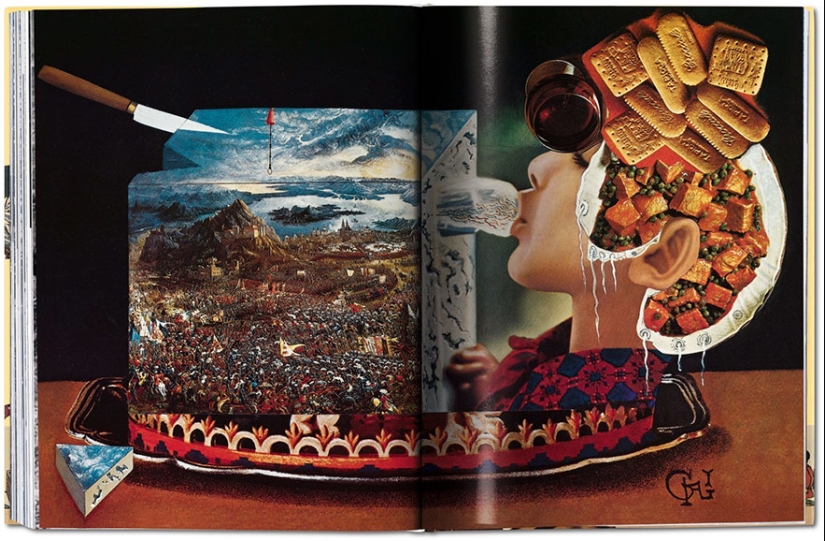
Dali simply adored his wife Gala, doted on her. She became the muse for many of his works. "I'm nothing without her," the artist said. And he called his cookbook no other than "Les Diners de Gala". Thus, he beat two meanings at once: in translation, the name can sound both as "Gala Dinners" and as "Gala dinners".
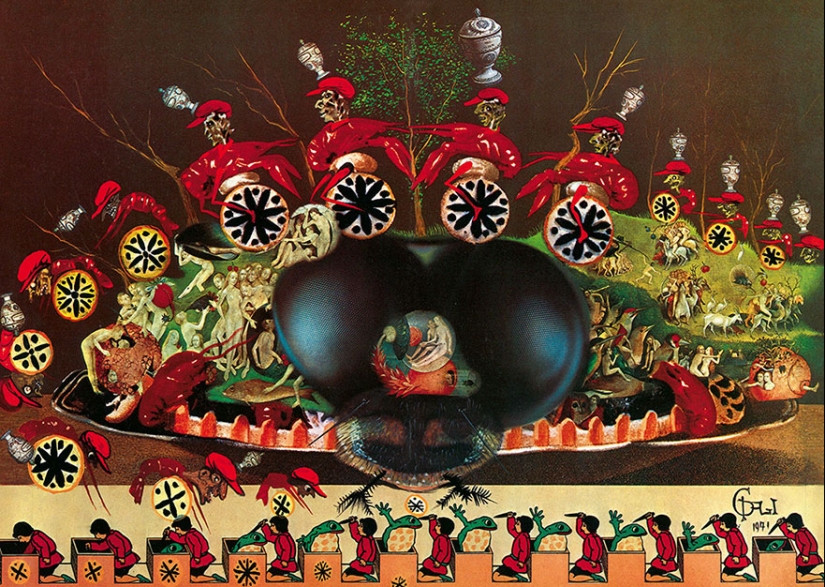
In the introductory speech to Les Diners de Gala, Dali honestly admits that the book is not for fans of healthy eating. People who eat only in order to survive should not open it at all. This book is about the enjoyment of food, about the ability to turn cooking into an art, about the earthly pleasure that food gives a person.
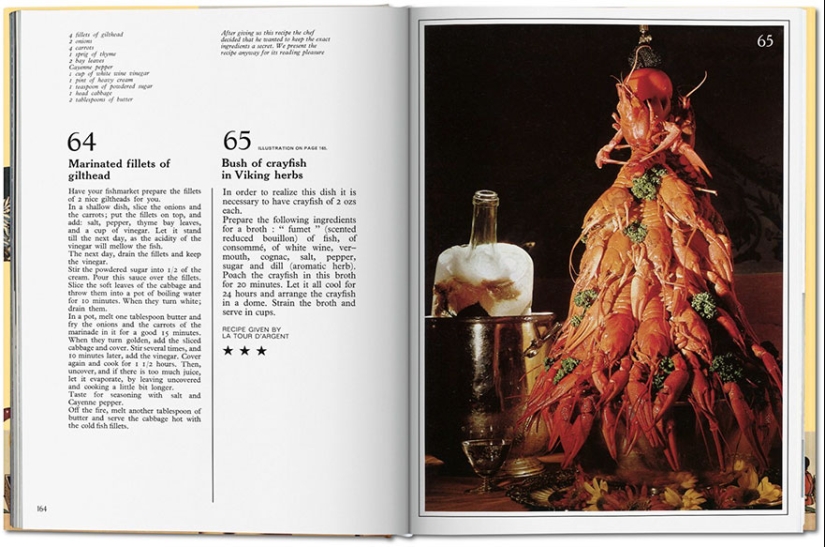
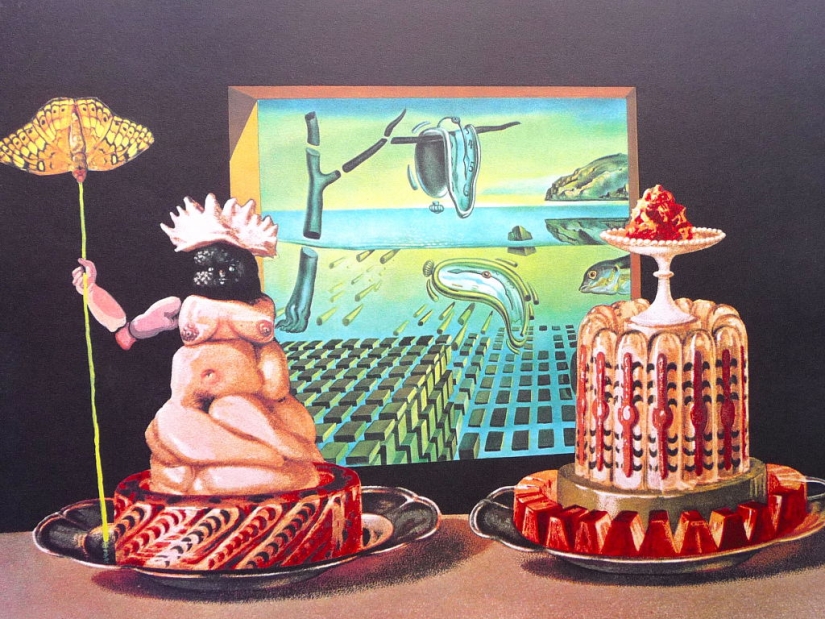
The recipes in Les Diners de Gala are not presented in a dry standard manner — ingredients, cooking method, result — but are framed by Dali's witty remarks.

Dali's semi-philosophical-semi-absurd statements about gastronomy are very funny. For example, about spinach:
or this:
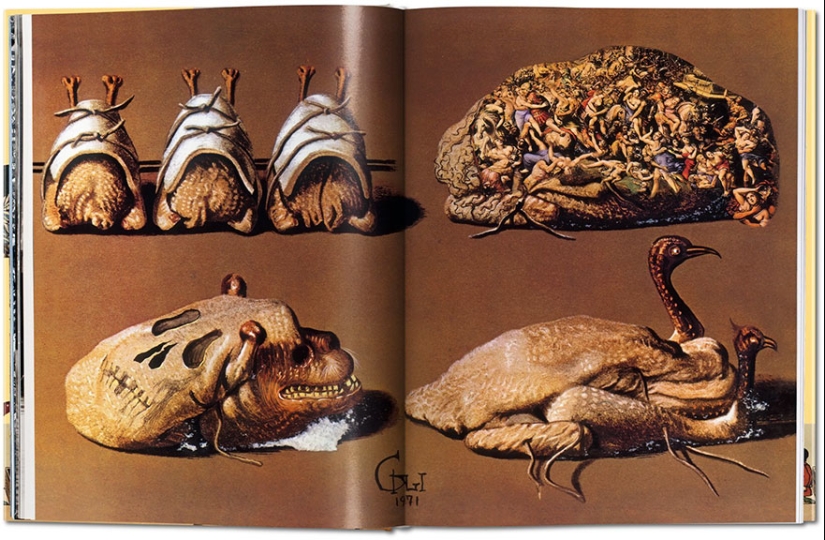
Dali was a true gourmet and a great hedonist. This is evidenced, in particular, by the many recipes of exotic dishes that "Les Diners de Gala" contains. Among them are "Peacock royally" and "Millennial Eggs in Chinese".
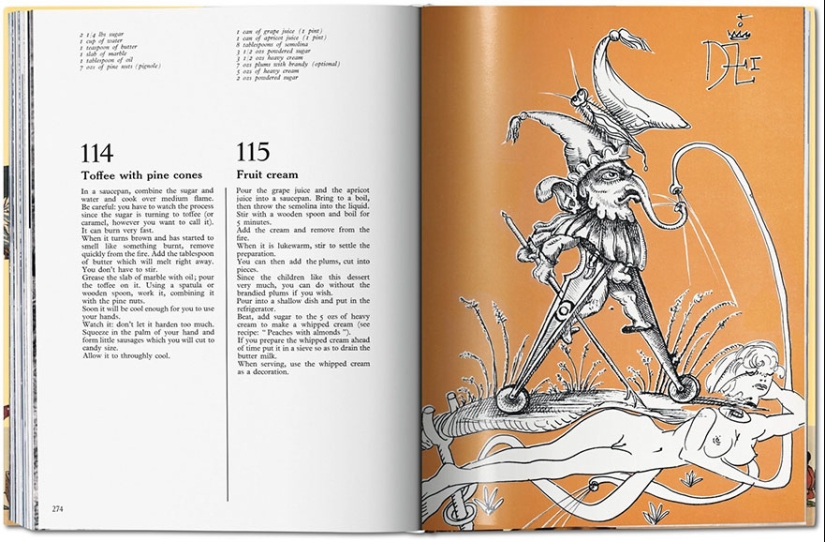
The cookbook "Les Diners de Gala" is also extremely valuable because Salvador Dali illustrated it with his own hand. Each recipe illustration can be considered as a separate work of art — even straight into the frame and on the wall of the museum.
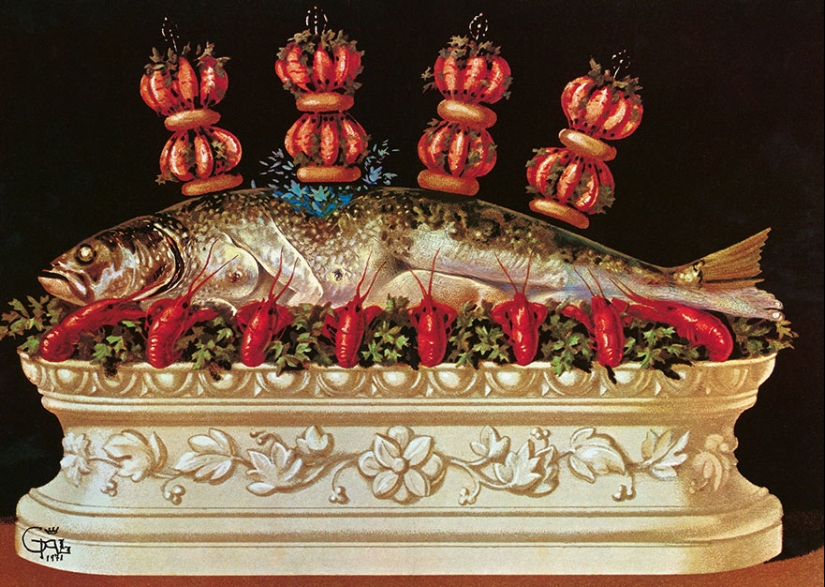
Surreal pictures from "Les Diners de Gala" are a special important moment of the artist's work. These illustrations do not contradict the rest of Dali's work at all, as it might seem to people who do not connect cooking and fine art. They, on the contrary, emphasize the author's style of the artist, secure for him the title of the most famous and influential surrealist in world painting.
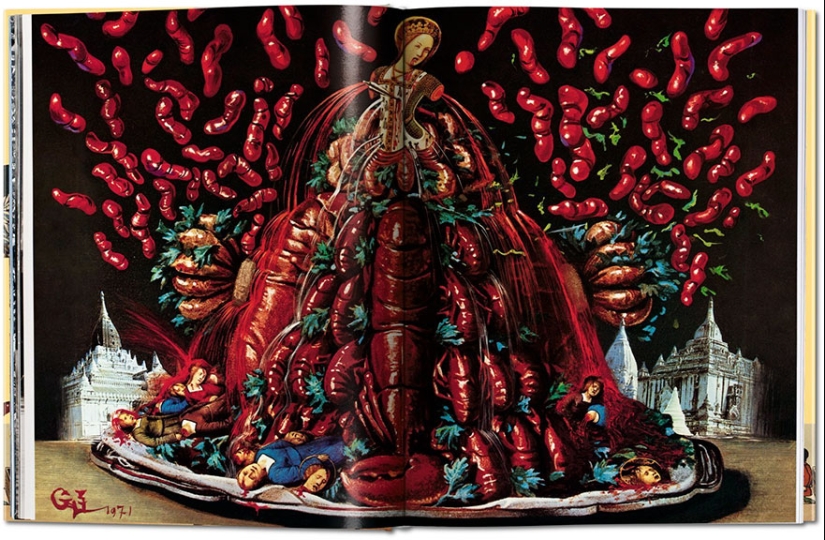
Take, for example, the image of a lady with severed hands, from which blood flows, watering three red crayfish on a platter lined with decapitated corpses. There is clearly a reference to the biblical story of John the Baptist, whose severed head was presented on a platter as a reward for dancing to the Jewish princess Salome.
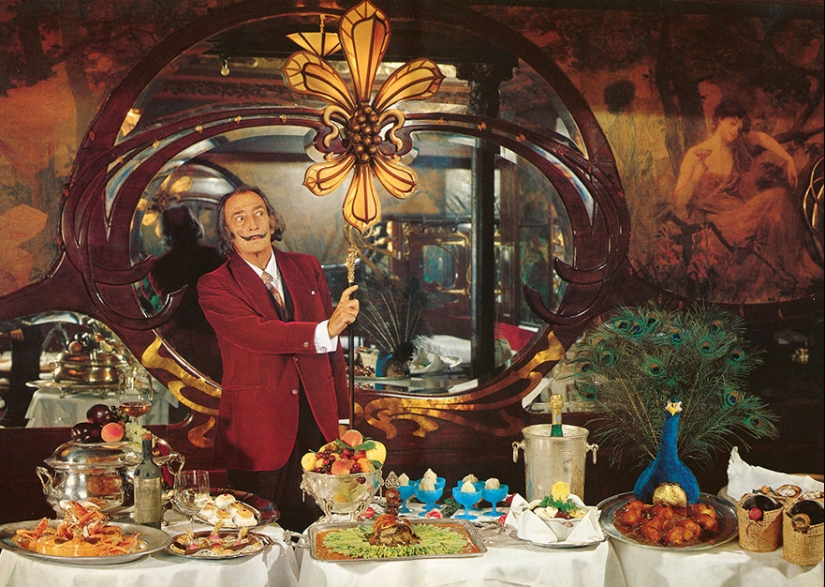
Only the author himself knew that such illustrations to recipes should excite the human imagination. We just have to be content with our associations. The 10th chapter "I eat" is considered special in the book Galu." It is dedicated to aphrodisiacs — products that can enhance love passion. The illustrations for this chapter are very shocking, eccentric and frank, however, as is Salvador Dali himself.
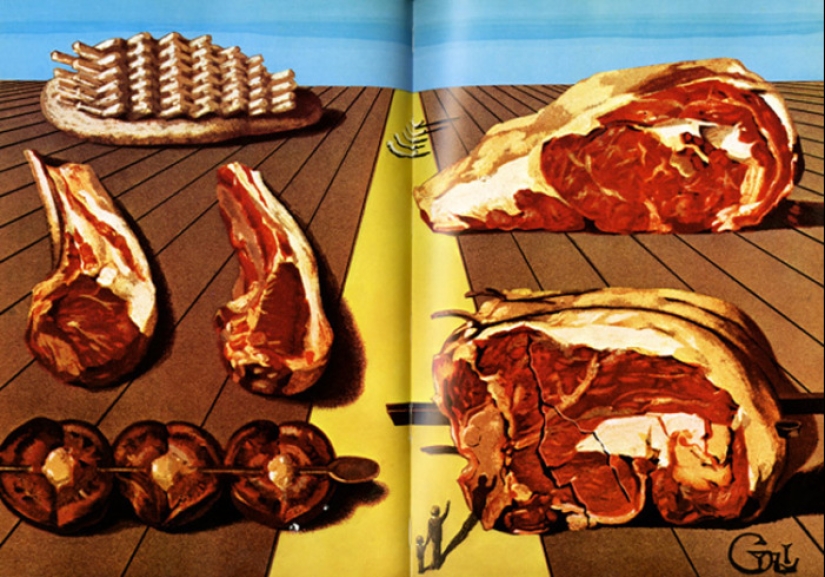
By the way, in a kind of surreal style, Dali titled all 12 chapters "Les Diners de Gala". Except "I eat Galu" (about aphrodisiacs), this includes such pearls of Dali's aphorisms as "Polished satellites of statistical larvae" (chapter on dishes of snails and frogs), "The Highest Lilliputian pleasures" (about the first dishes), "Simpering royal whims" (about exotic dishes), "Monarchical flesh" (about dishes from poultry), "Autumn cannibalism" (about egg dishes), "Variegated plumes" (about seafood). As well as chapters on vegetables called "Deoxyribonucleic atavism", "Midnight Passions" (about desserts and sweets) and "Little sinful pleasures" (about various snacks). Dali clearly relishes every word, describing the subtleties of cooking and eating all these dishes.
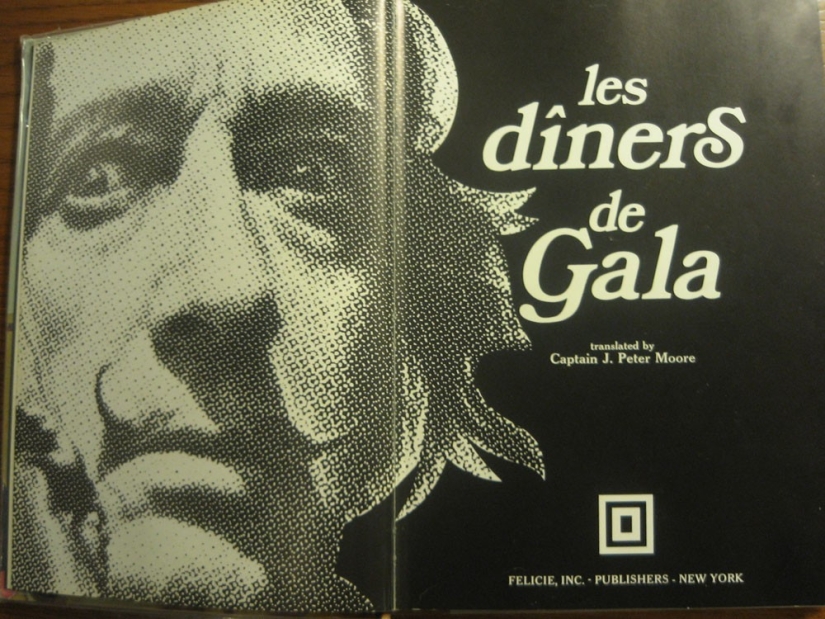
"Les Diners de Gala" is not a book of culinary hypotheses and fantasies: all 136 dishes were prepared in the best restaurants in Paris — Lasserre, La Tour d'Argent, Maxim's and Le Train Bleu. The book itself can now be purchased on Amazon or Ebay, however, given its rarity and small print runs (in 2016, a reprint was published in the German publishing house Taschen), it will cost quite a lot. But, you must agree, "Les Diners de Gala" deserves it!
Recent articles

Victor Lustig is considered one of the most skillful and famous scammers in the world. He was arrested about 50 times and released ...

A small apartment is not a sentence! On the contrary, this is an occasion to turn on imagination and come up with ways to stylishly ...

Each of us has heard at least once that "breakfast is the most important meal of the day." Spreading this truth is the work of ...